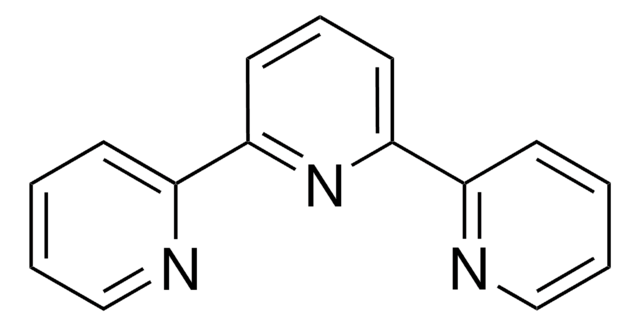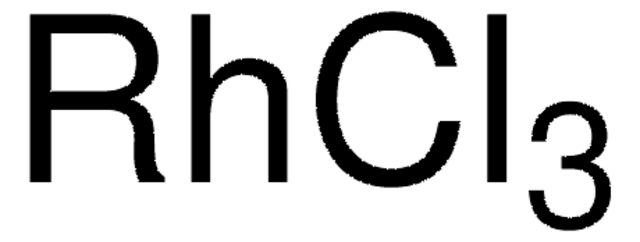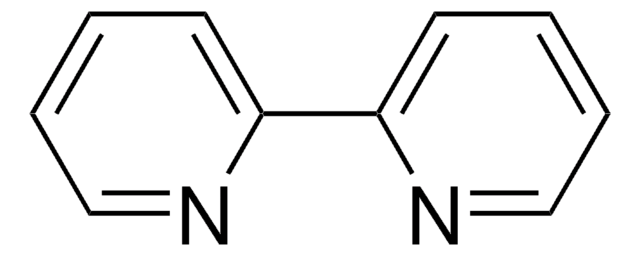935484
Ruthenium(III) chloride
anhydrous, powder, 99.99% trace metals basis
Sinónimos:
Ruthenium chloride, Ruthenium trichloride, Trichlororuthenium
About This Item
99.99% trace metals basis
Productos recomendados
grade
for analytical purposes
Quality Level
assay
40-50% Ru basis (gravimetric)
99.99% trace metals basis
form
powder
specific gravity measuring range
6.97 g/mL
impurities
≤150 ppm (trace metals analysis)
color
dark gray to black
pH
1-2
solubility
water: soluble
density
3.11 g/mL at 25 °C (lit.)
SMILES string
Cl[Ru](Cl)Cl
InChI
1S/3ClH.Ru/h3*1H;/q;;;+3/p-3
InChI key
YBCAZPLXEGKKFM-UHFFFAOYSA-K
¿Está buscando productos similares? Visita Guía de comparación de productos
General description
Application
signalword
Danger
hcodes
Hazard Classifications
Acute Tox. 4 Oral - Aquatic Chronic 2 - Eye Dam. 1 - Skin Corr. 1B
Storage Class
8A - Combustible corrosive hazardous materials
wgk_germany
WGK 3
flash_point_f
Not applicable
flash_point_c
Not applicable
Elija entre una de las versiones más recientes:
Certificados de análisis (COA)
It looks like we've run into a problem, but you can still download Certificates of Analysis from our Documentos section.
Si necesita más asistencia, póngase en contacto con Atención al cliente
¿Ya tiene este producto?
Encuentre la documentación para los productos que ha comprado recientemente en la Biblioteca de documentos.
Nuestro equipo de científicos tiene experiencia en todas las áreas de investigación: Ciencias de la vida, Ciencia de los materiales, Síntesis química, Cromatografía, Analítica y muchas otras.
Póngase en contacto con el Servicio técnico








